Revealing the timeless appeal of the Princess of Xiaohe, a mummy that captivates hearts even after nearly 4,000 years. Explore the enigmatic beauty and cultural legacy of this ancient icon
Located amidst the vast expanse of the Taklamakan Desert in Xinjiang, China, lies a necropolis packed with secrets from a bygone era. Within its depths, archaeologists unearthed a remarkable discovery in 2003: the exquisitely preserved mummy of a young woman, now known as the Princess of Xiaohe. This fascinating find has not only enriched our understanding of ancient civilizations, but has also highlighted the intricate web of human migration and cultural exchange that developed along the Silk Road.

One of the most famous mummies found in the Tarim Basin is that of the Princess of Xiaohe.
How were the mummies of Princess Xiaohe found?
China’s Xinjiang Autonomous Region is part of the Silk Road, where Eastern and Western cultures intersect. Since ancient times, this place has been a bridge between the peoples and cultures of Asia and Europe. In this area, over the years, archaeologists have discovered hundreds of mummies naturally preserved by the dry desert air.
One of the sites that scientists have focused on investigating is the Tieu Ha cemetery. This area was first known to the world in 1934. At that time, Swedish archaeologist Bergman went to Lop Nur in the Xinjiang Autonomous Region to conduct a survey. After many days of searching, Bergman found the mysterious cemetery with many coffins.

The Tarim Basin in Xinjiang, a region in western China.
It was not until 2000 that archaeologists from the Xinjiang Institute of Archaeology and Cultural Relics began a search in the Lo Nur Desert. With the help of a satellite navigation system, they found this buried cemetery. In 2003, archaeologists officially opened a comprehensive excavation at the Tieu Ha cemetery. Secrets hidden for 4,000 years are gradually being revealed. Here, archaeologists have excavated a total of 167 tombs, of which the most famous is the tomb of the “Princess of Xinjiang”, also known as the “Princess Tieu Ha”.
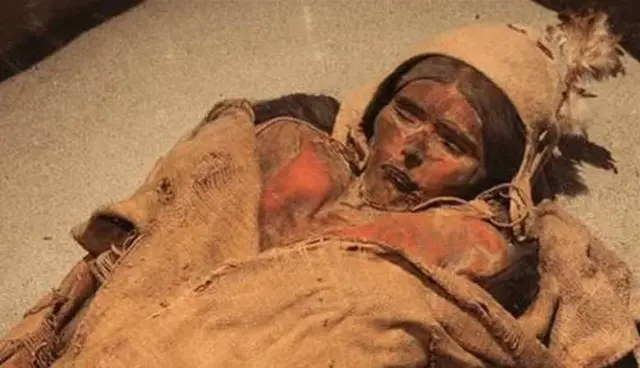
Princess of Xiaohe
She was named Princess of Xiaohe because of her state of preservation and beauty, not because of her social status; there is no reason to believe she was more important than the other mummies buried in the complex. She was part of the Xiaohe culture and was buried about 3,800 years ago.
What does the mummy of Princess Xiaohe look like?
According to an archaeology professor from Jilin University, when excavating the tomb of “Princess Tieu Ha”, all archaeologists were surprised because the mummy was so well preserved.
The princess has red hair and long eyelashes, with some facial features more similar to Indo-Europeans than to modern people of the region in which she was found, such as high cheekbones and pale skin. She appears to be smiling slightly. She was 152 cm (5 ft 0 in) tall. She was buried wearing a white felt hat, a white wool cape with tassels and a linen skirt, and fur-lined leather boots on her feet. She had a red rope necklace and a bracelet with a jade bead on her right arm.
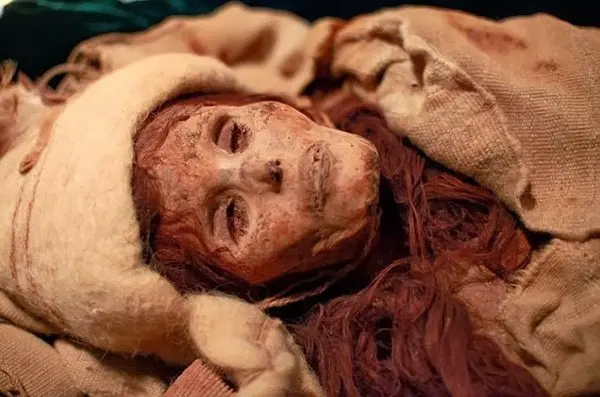
The princess of Xiaohe is said to have smooth skin, a high nose, long red hair and long curly eyelashes.
She was buried with wooden pins and three small bags of ephedra. Ephedra twigs and branches were placed next to her body. Wheat and millet grains, threads made from animal tendons and animal ears were scattered on her body. A wooden phallic object was placed between her breasts. Like the other mummies at Xiaohe Cemetery, she was buried in a boat-shaped coffin with a wooden post on top. Her grave had not been disturbed since her burial, when it was found by archaeologists in 2003.

Close-up of Princess Xiaohe’s face
Pieces of cheese were found on his neck and chest, possibly as food for the afterlife. Initially, archaeologists were unsure what the lumps on his body were. However, a 2014 study led by Andrej Shevchenko proved that they were cheese. The cheese found on the mummies from this cemetery is the oldest preserved cheese in the world, probably made from a kefir sourdough. His entire body and boots were also covered in a white substance, probably also a dairy product but of so far unknown origin.
Where did Princess Xiaohe come from?
The girl has an unusual appearance with white skin, round eyes and long hair, and looks more like a European than a Chinese. Xiaohe’s facial features are very different from those of Asians living at that time. So, experts are curious to know where this beautiful beauty comes from?
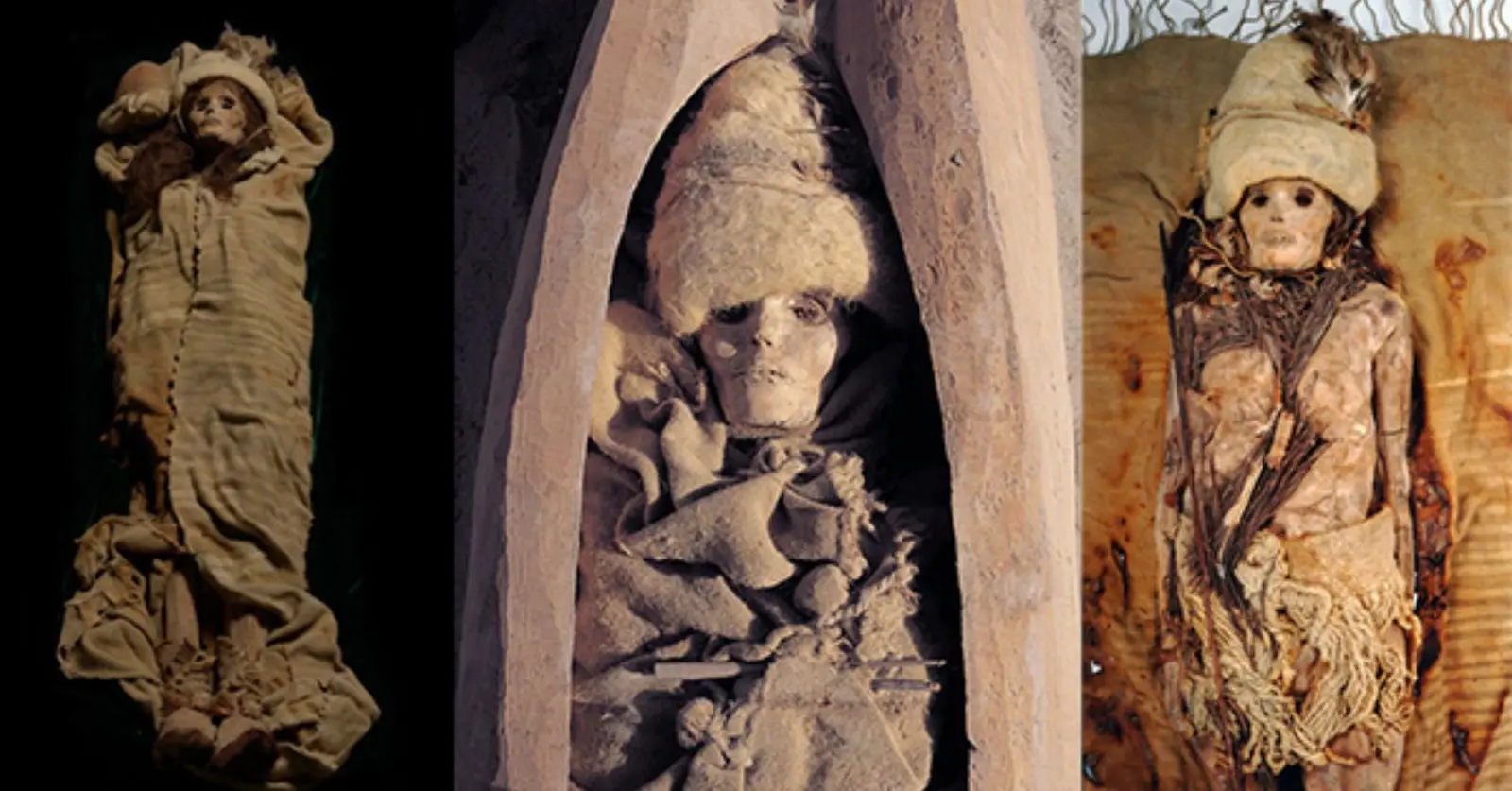
Analysis shows that this princess has two Eurasian lineages
DNA test results showed that his ancestry was a mixture of eastern and western Eurasian populations. One hypothesis proposed is that Xiaohe came from somewhere between southeastern Europe and the Ural Mountains. Xiaohe and his community had a long settlement in the Taklamakan Desert. After his death, Xiaohe was buried here.
Unraveling the enigma of her smile
Later, the “Princess of Xiaohe” was displayed in many exhibitions and museums. Many tourists noticed that the “Princess of Xiaohe” seemed to have a smile on her face.
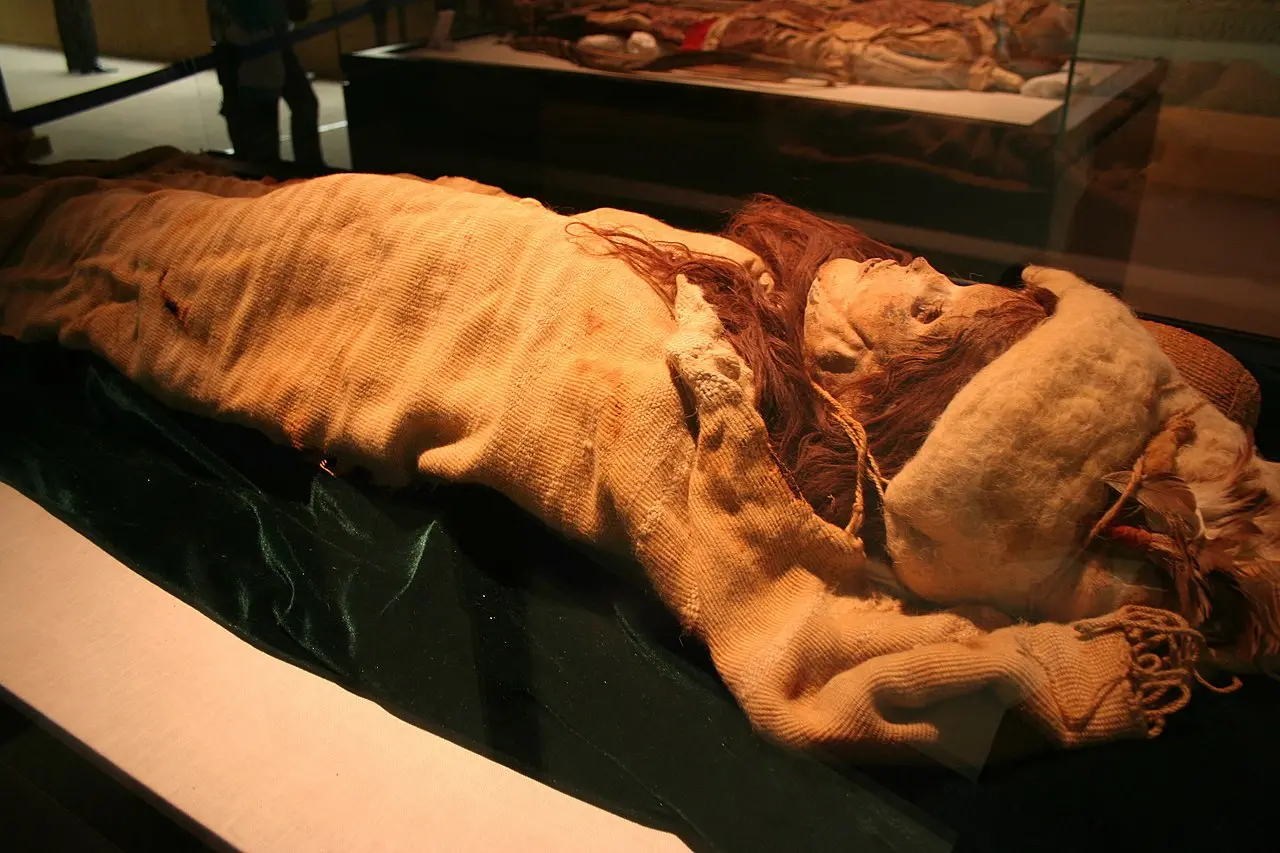
Princess of Xiaohe. Beijing Capital Museum
However, scientists say that how this smile appeared and why she has it, they have no way of verifying from a scientific point of view. Perhaps posterity simply needs to understand that it is a good thing that the “Princess of Xiaohe” left behind for everyone, while others suggest that it could be a consequence of post-mortem processes that affected her facial muscles.

Unraveling the enigma of her smile
Regardless of the reason behind her smile, it remains an enduring symbol of Princess Xiaohe’s enduring appeal. It is a testament to the lasting power of human emotions, transcending the boundaries of time and culture.
Archaeologists then restored the princess’s appearance using graphics software. The portrait makes viewers admire her modern beauty. However, many people believe that when she was alive, this princess could have been many times more beautiful.
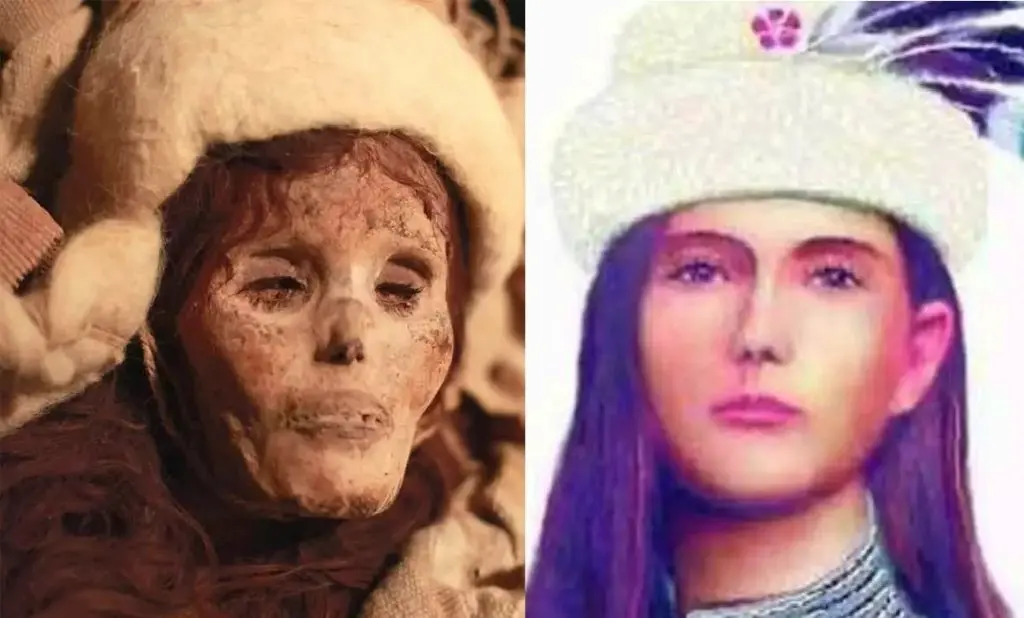
Archaeologists then restored the princess’s appearance using graphics software.
The discovery of Princess Xiaohe continues to spark curiosity and inspire new research. Scientists are now using advanced techniques to analyze her DNA in greater detail, hoping to determine her exact origins and shed light on the migration patterns of ancient people. Her legacy extends far beyond the desolate sands of the Taklamakan Desert, offering a glimpse into a forgotten world and a testament to the enduring human spirit.






